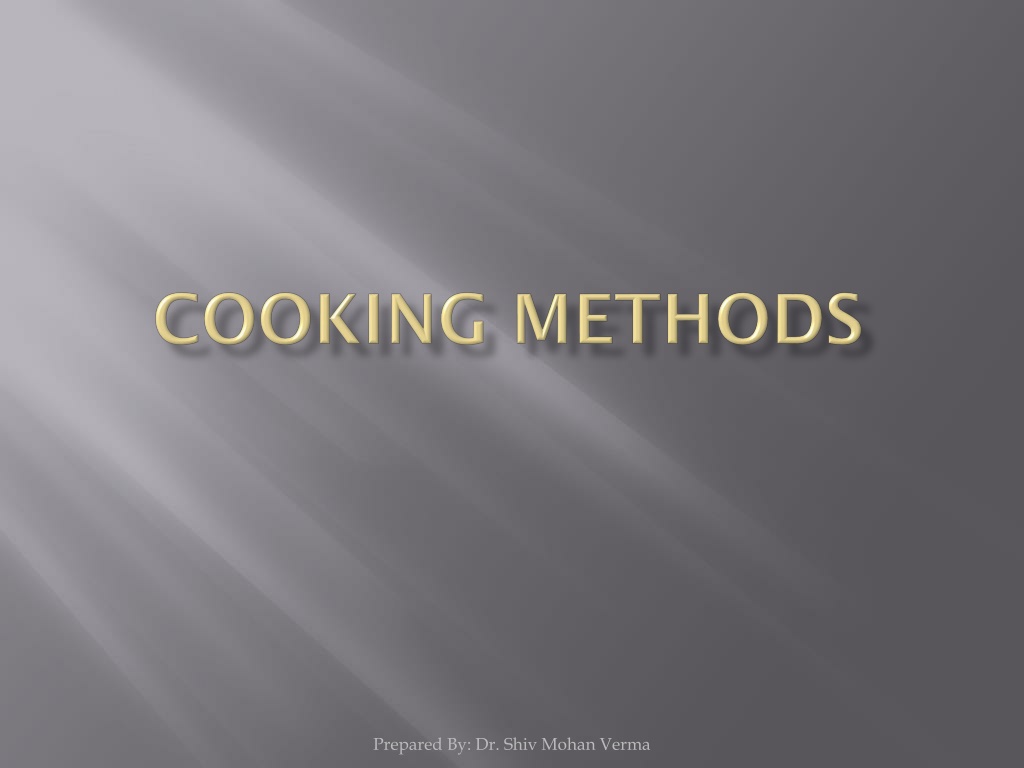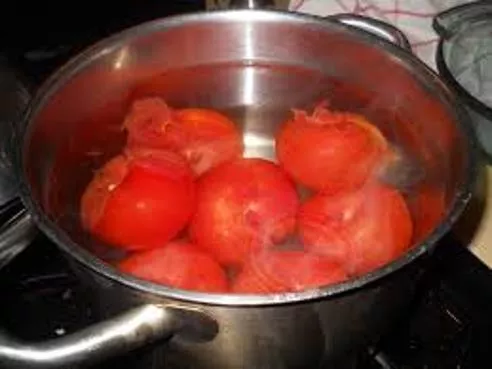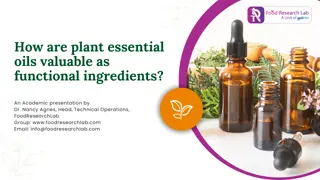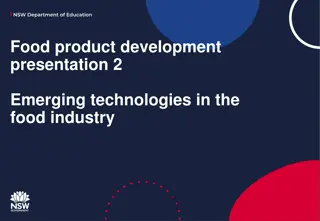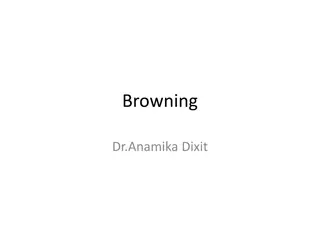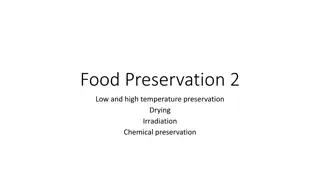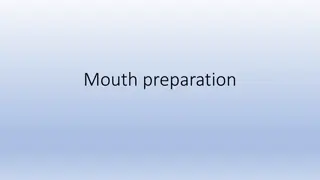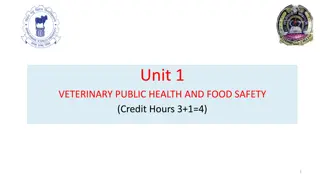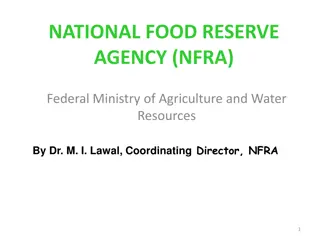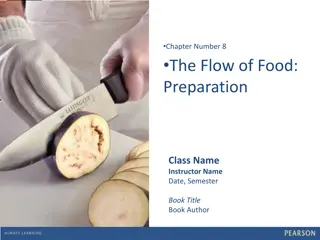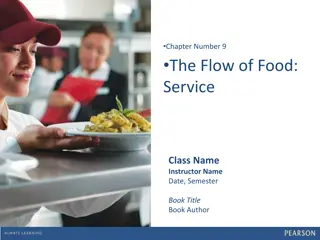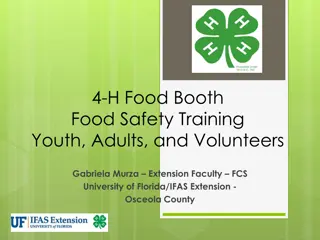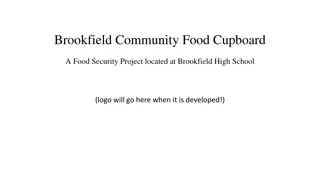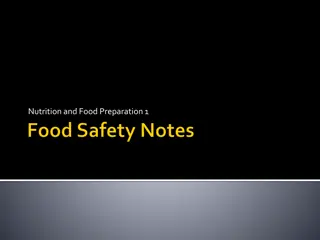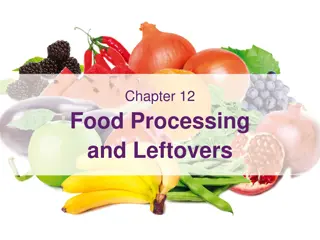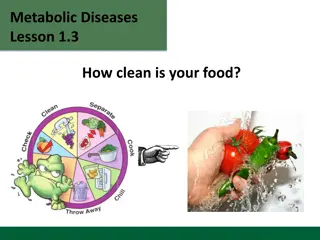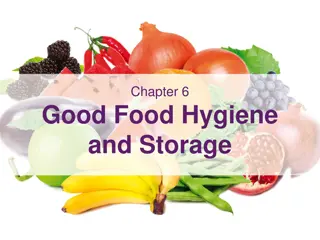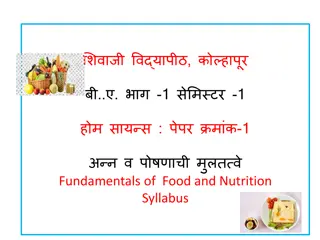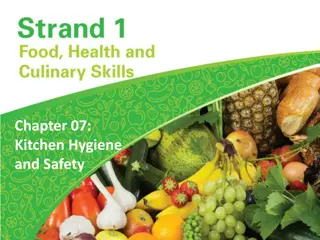Process of Blanching and Steaming in Food Preparation
Blanching and steaming are essential techniques in food preparation to enhance flavors, colors, and nutrient retention. Blanching involves a quick boiling and cooling process, while steaming uses steam for cooking without added fats. Both methods contribute to healthier and tastier dishes, making them popular choices among health-conscious individuals.
Download Presentation

Please find below an Image/Link to download the presentation.
The content on the website is provided AS IS for your information and personal use only. It may not be sold, licensed, or shared on other websites without obtaining consent from the author. Download presentation by click this link. If you encounter any issues during the download, it is possible that the publisher has removed the file from their server.
E N D
Presentation Transcript
Blanching is a process of food preparation wherein the food substance, usually a vegetable or fruit, is plunged into boiling water ,removed after a brief, timed interval and finally plunged into iced water or placed under cold running water (shocked) to halt the continuing cooking process. Prepared By: Dr. Shiv Mohan Verma
There are two ways of blanching in water: 1-Place the item in cold water, bring to a boil and simmer briefly, Cool the item by plunging into cold water. The idea is to dissolve out blood, salt, and impurities from certain meats and bones. 2-Place the item in rapidly boiling water and return the water to the boil. Remove and cool in cold water. The purpose is to preserve the color and destroy harmful enzymes in vegetables, or to loosen skins of tomatoes, peaches and similar item for easier peeling. Prepared By: Dr. Shiv Mohan Verma
Blanching loosens the skin on some fruits or nuts, such as onions, tomatoes, plums, peaches, or almonds. Blanching enhances the flavor of some vegetables, such as broccoli by releasing bitter acids stored in the cellular structure of the food. Blanching enhances the color of some (particularly green) vegetables by releasing gases trapped in the cellular material that obscure the greenness of the chlorophyll. Since blanching is done - and halted quickly, the heat does not have time to break down chlorophyll as well. Blanching kills off bacteria and enzymes present in foods, thus delaying spoilage. This is often done as a preparatory step for freezing and refrigerating vegetables. Prepared By: Dr. Shiv Mohan Verma
Steaming is a method of cooking using steam. Food is cooked in the steam produced by a boiling liquid (rather than placing the food itself in the boiling liquid). Steaming relies on the steam produced being under pressure. The amount of pressure produced is determined by the type of equipment used. It is a preferred cooking method for health conscious individuals because no cooking oil is needed, thus resulting in a lower fat content. Steaming also results in a more nutritious food than boiling because fewer nutrients are destroyed or leached away into the water (which is usually discarded). It is also easier to avoid burning food when steaming. Prepared By: Dr. Shiv Mohan Verma
Steaming is mostly used for vegetables. It cooks them rapidly without mixing and minimizes the dissolving away of nutrients occurs when vegetables are boiled. Steamed food is easily digested; steaming retains most of the nutrients and flavor. While steaming pour enough water and have the water boiling, if the water is evaporating add only, boiling water to replenish. Prepared By: Dr. Shiv Mohan Verma
Braising (from the French braiser) is to cook covered in a small amount of liquid, usually after preliminary browning. The meat is usually browned first using a dry-heat method such as pan-frying. A desirable taste and flavor can be obtained to the product and the sauce. Braising also refers to cooking some vegetables such as cabbage at low temperature in a small amount of liquid, without first browning in fat, or with only a light preliminary sauting. Prepared By: Dr. Shiv Mohan Verma
Uniform cooking. The heat strikes the braising pot on all sides not just the bottom. Less attention is required. Foods braise at a low, steady temperature without having to be checked constantly. Range space is free for other purposes. Prepared By: Dr. Shiv Mohan Verma
